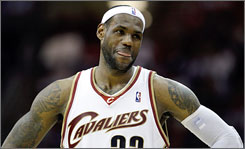- 1,947
- 11
- Joined
- Apr 30, 2005
hey nt, i was just wondering if anyone can tell me why the NBA changed the draft age? i know that a person must be at least 19 years old and have went to college for at least one NBA season to qualify but what brought about the change?
edit: thanks for the info. not that i want to create a debate but has this helped the NBA and NCAA?
edit: thanks for the info. not that i want to create a debate but has this helped the NBA and NCAA?


 .
.